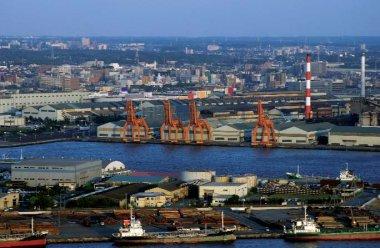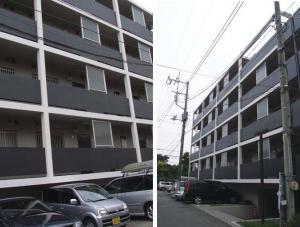Living It Up in 2008
By Hirokazu Mukai
Some guidance for real estate investment
The Chiba option
 Living It Up in 2008 - Chiba: there’s more to it than Disneyland
Living It Up in 2008 - Chiba: there’s more to it than Disneyland
While foreigners living in Japan have traditionally gravitated towards Minato-ku, typically Roppongi, Azabu and Hiroo, there has been a notable increase of interest in Tokyo’s surrounding prefectures, Yokohama, Kanagawa, Saitama and Chiba. This reflects the swelling of Tokyo, spilling outside of its nucleus and into the areas around it and many foreigners, particularly those who have lived in Japan a long time, are happy to do without the home comforts of international supermarkets and foreigner-friendly bars and move outwards. In Chiba for example, there are the benefits of natural beauty, significantly cleaner air, as well as cheaper residential and office real estate costs. Famous for Disneyland, the prefecture is also a convenient place to base a family or a business—a manageable commute from Tokyo and with enough amenities and services, including some good international schools, to make it a very pleasant place for foreigners.
In terms of transport, the Aqua Line highway that connects Chiba to Kawasaki was hailed as a great improvement but is actually rather inefficient due to high charges. However, the government will probably lower this to increase usage, and new roads such as tatemayado in the south of the prefecture mean the area is getting much easier to access.
The Japan External Trade Organization (JETRO) rates Chiba as an “ideal” location for businesses because of its cheaper prices and improved facilities. As well as the increase in private schooling for foreigners in the area, the government has also, under amendments to the Education Law, made plans for a new kindergarten and elementary school to open in 2008 that will be able to accept Japanese children returning from abroad or foreigners.
Chiba is therefore an increasingly attractive location not only for foreigners to move to, but also for foreigners living in Japan to invest in. Working in the asset management business, I have seen some interesting success stories in the area. One client of mine—a doctor with a fair amount of savings but no time to use them strategically—bought an apartment block in autumn 2006. At the time the block was only 65% occupied but now there is only one apartment vacant. Off an initial investment of roughly ¥250,000,000, mostly borrowed from the bank, the doctor receives a return of approximately 10%. Office blocks might also be worth purchasing as although the demand is not as high as in central Tokyo, the necessary capital is also lower and the market is steadily growing and improving.
Other outlying areas such as Saitama may also be worth looking at as are Kanagawa and Yokohama—major Japanese companies are relocating their headquarters to such outlying areas, as Nissan plan to do in Yokohama, 2009.
Taking the plunge
If you don’t already have capital available, slowly but surely, it is actually getting easier to borrow money in Japan.
Making an investment in real estate or another asset category as a foreigner can be a tough process. One of the most frequent questions I get asked by foreigners thinking of investing in assets in Chiba, or in other areas for that matter, is ‘how do I get the funds?’ If you don’t already have capital available, slowly but surely, it is actually getting easier to borrow money in Japan. In terms of speed, if you have a permanent resident’s visa, Mitsui Sumitomo is probably the best place to go. Tokyo Star Bank also has a good reputation for being openminded about foreigners but they can be a little bit slow. Other places to try would be the foreign banks in Japan such as Citibank. However, even with the foreign banks it is important to find someone who can speak and read Japanese—on the banks’ side this helps create a feeling of trust and good communication and, for the borrower, they are able to ask any questions that they need, and are able to understand all the information that they are given.
The other question I often get asked is ‘how much do I need to make a worthwhile investment?’ This is much harder to answer as obviously return is in direct relation to the amount of capital. However, if a client has a minimum of ¥2 million then that is enough for a down payment on a small shop or an apartment—returns from such an investment fall within the range of 7–9% which makes it better than most personal savings plans.
 Living It Up in 2008 - Apartments in Funabashi, bought for ¥173 million with a return of 9%
Living It Up in 2008 - Apartments in Funabashi, bought for ¥173 million with a return of 9%
One US client of mine managed to get funds from a major Tokyo bank and I helped him to get him a property in Shinagawa-ku. He made a down payment of US$40,000 and then he pays roughly US$750 a month—and receives over $1,000 from the tenant. This has allowed him to get substantial returns on his capitals— when his outgoings are factored in it averages out at a return of roughly 8.5%.
We were also involved in the sale of the apartment block pictured above in Funabashi. This was priced at ¥173 million and the expected rate of return was 9%. The propery had 3 out of 15 rooms vacant but our lease manager arranged tenants so it is now fully occupied. Again, the client financed the purchase 95% via a bank loan.
The important thing to remember when purchasing real easte is to take the time to consider the investment and get good advice. That said, in a capitalist economy, using money to make money is one of the luxuries we can enjoy.
JI.
![]()
Hirokazu Mukai is CEO of Minato Asset Management (www.toshiweb.com). He started the business after a career in investment banking and is a qualified CMA securities analyst. He can be contacted at +81-90-4123-1025





